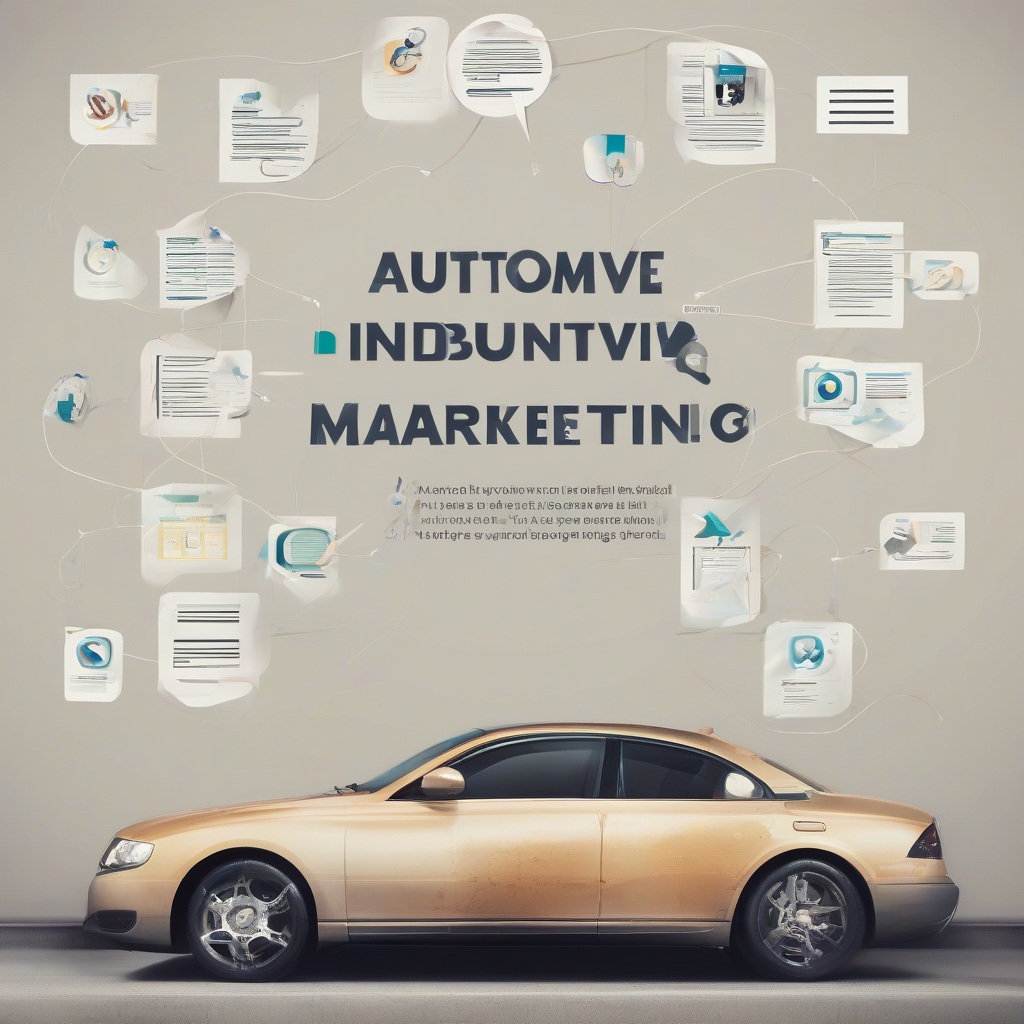Driving Conversions: A Deep Dive into Automotive Inbound Marketing
The automotive industry is a fiercely competitive landscape. Standing out and attracting the right customers requires a strategic approach, and inbound marketing is proving to be a highly effective solution. This comprehensive guide will explore the intricacies of automotive inbound marketing, providing actionable insights and strategies to boost your dealership’s lead generation, brand awareness, and ultimately, sales.
Understanding the Automotive Customer Journey
Before diving into specific tactics, it’s crucial to understand the unique journey of a prospective car buyer. This journey is often longer and more complex than in other industries, involving significant research, comparison, and emotional investment.
- Awareness: The customer starts recognizing a need for a new or used vehicle. This could be triggered by various factors, including a worn-out car, changing family needs, or simply a desire for an upgrade.
- Consideration: The customer researches different makes, models, features, and financing options. They compare prices, read reviews, and seek information from various sources.
- Decision: The customer narrows down their choices and selects a specific vehicle. This stage involves intense deliberation and often includes test drives and negotiations.
- Action: The customer makes the purchase and becomes a loyal customer (hopefully!). Post-purchase engagement is crucial for maintaining a positive relationship and fostering future sales.
Key Pillars of Automotive Inbound Marketing
Effective automotive inbound marketing relies on a multifaceted approach that aligns with each stage of the customer journey.
1. Content Marketing: Providing Value at Every Stage
Content marketing is the cornerstone of inbound marketing. It involves creating valuable, relevant, and consistent content that attracts and engages your target audience. In the automotive context, this can include:
- Blog posts: Covering topics like car maintenance tips, fuel efficiency comparisons, new car features, and industry news.
- Videos: Showcasing vehicle features, test drives, behind-the-scenes dealership tours, and customer testimonials.
- Infographics: Presenting complex data in a visually appealing and easily digestible format (e.g., comparing fuel economy of different models).
- Ebooks and Guides: Offering in-depth resources on topics like buying a used car, financing options, or selecting the right vehicle for your lifestyle.
- Case studies: Highlighting successful customer experiences and demonstrating the benefits of your dealership’s services.
2. Search Engine Optimization (SEO): Getting Found Online
SEO is crucial for ensuring your content reaches the right audience. Optimizing your website and content for relevant keywords allows potential customers to find your dealership when searching online for vehicles, services, or related information. Key SEO strategies include:
- Keyword research: Identifying the terms and phrases your target audience is using to search for vehicles and related services.
- On-page optimization: Optimizing website content, meta descriptions, and title tags to improve search engine rankings.
- Off-page optimization: Building high-quality backlinks from reputable websites to enhance your website’s authority.
- Local SEO: Optimizing your Google My Business profile and other local directories to ensure your dealership appears in local search results.
3. Social Media Marketing: Building Brand Awareness and Engagement
Social media platforms are essential for building brand awareness, engaging with potential customers, and showcasing your dealership’s personality. Effective social media strategies include:
- Targeted advertising: Reaching specific demographics with tailored ads promoting your inventory, services, or special offers.
- Engaging content: Sharing visually appealing content, such as photos and videos of your vehicles, dealership events, and customer testimonials.
- Community building: Interacting with followers, responding to comments and messages, and fostering a sense of community around your brand.
- Influencer marketing: Partnering with automotive influencers to promote your dealership and reach a wider audience.
4. Email Marketing: Nurturing Leads and Driving Conversions
Email marketing is a powerful tool for nurturing leads and converting them into customers. Effective email strategies include:
- Lead nurturing sequences: Sending a series of emails to educate leads about your dealership and its services.
- Promotional emails: Announcing special offers, new inventory arrivals, and upcoming events.
- Personalized emails: Tailoring email content to individual customer preferences and interests.
- Automated emails: Sending automated emails triggered by specific customer actions, such as website visits or form submissions.
5. Paid Advertising (PPC): Reaching a Wider Audience
Paid advertising, such as Pay-Per-Click (PPC) campaigns on Google and social media, can be highly effective for reaching a wider audience and driving immediate results. Key considerations include:
- Keyword targeting: Selecting relevant keywords to ensure your ads are shown to the right audience.
- Ad copy optimization: Crafting compelling ad copy that encourages clicks and conversions.
- Landing page optimization: Creating dedicated landing pages that are designed to capture leads and drive conversions.
- Campaign tracking and analysis: Monitoring campaign performance and making adjustments to optimize results.
Measuring Success: Key Automotive Inbound Marketing Metrics
Tracking key metrics is essential for evaluating the effectiveness of your inbound marketing efforts. Important metrics to monitor include:
- Website traffic: Tracking the number of visitors to your website and their sources.
- Lead generation: Monitoring the number of leads generated through your various marketing channels.
- Conversion rates: Measuring the percentage of leads that convert into customers.
- Customer lifetime value (CLTV): Assessing the total revenue generated by each customer over their relationship with your dealership.
- Return on investment (ROI): Calculating the return on your inbound marketing investment.
Adapting to the Ever-Evolving Automotive Landscape
The automotive industry is constantly evolving, with new technologies, consumer preferences, and marketing trends emerging regularly. To stay ahead of the curve, dealerships must be adaptable and continuously refine their inbound marketing strategies. This involves:
- Staying updated on industry trends: Regularly monitoring industry news and publications to stay informed about the latest developments.
- Experimenting with new technologies: Exploring new marketing technologies and tools to enhance your reach and effectiveness.
- Analyzing data and making adjustments: Regularly analyzing your marketing data to identify areas for improvement and make necessary adjustments to your strategies.
- Providing exceptional customer service: Focusing on providing an outstanding customer experience to build loyalty and encourage repeat business.
